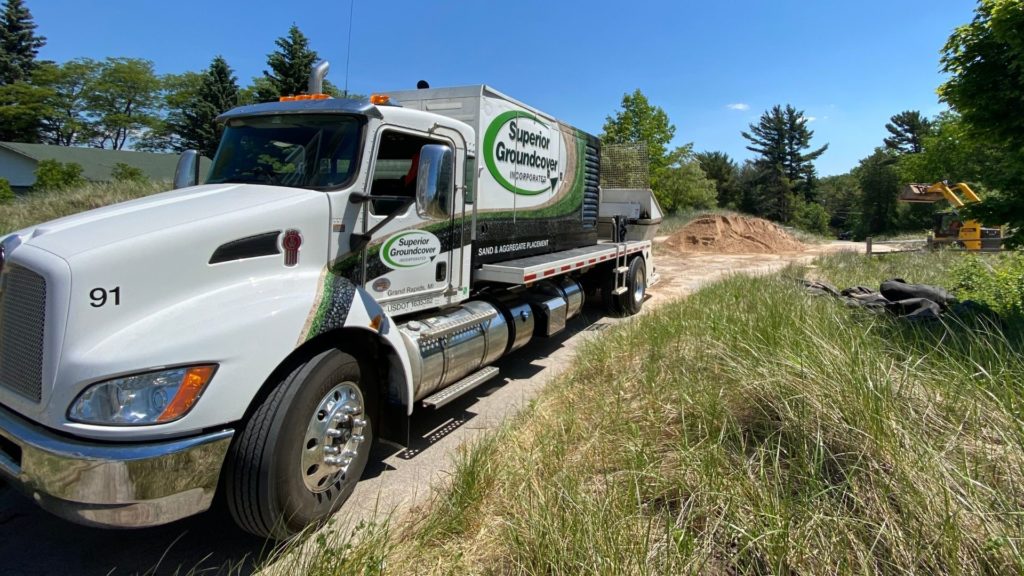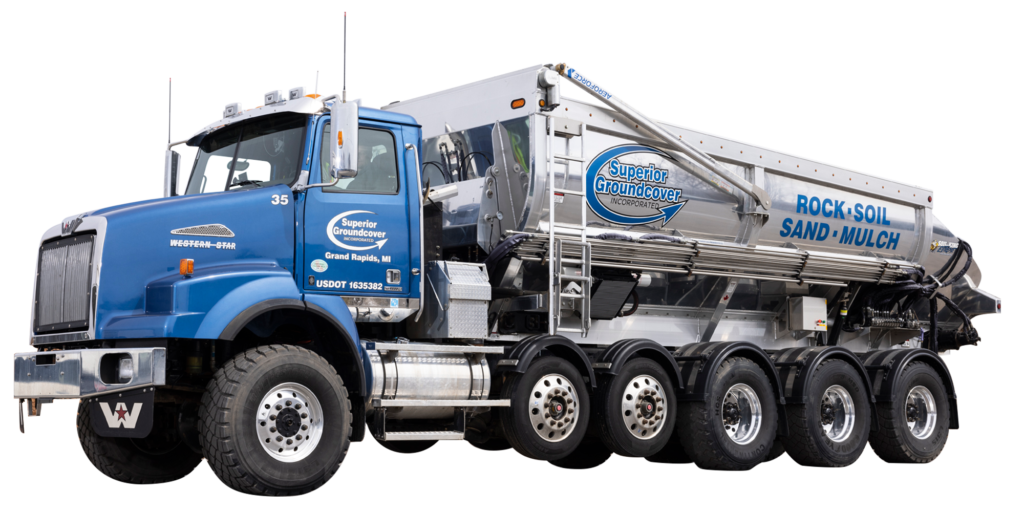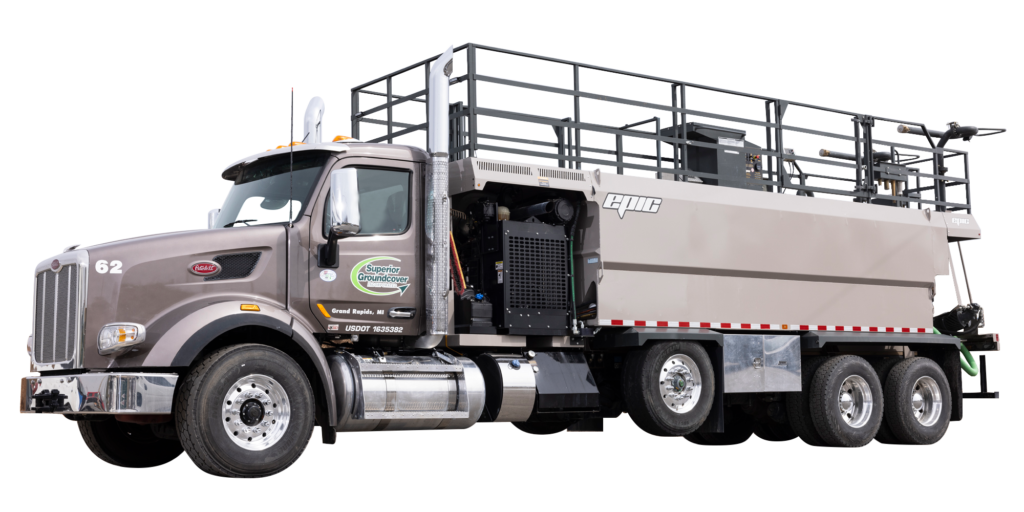What Is Dune Restoration? Why Is It Necessary?
Michigan’s nearly 3,300 miles of shoreline are home to roughly 275,000 acres of sand dunes. These coastal sand dunes have been formed by the wind over thousands of years. They play an important role in the ecosystem of the coast as well as the environmental diversity of the nation. The Great Lakes sand dunes are home to many plants and animals not found anywhere else.
Dunes are naturally dynamic, which means that their sands shift in response to storms, waves, and winds. However, this ability to shift and adapt makes the dunes even easier targets for the forces of erosion. Invasive species and human activity, including tourism, sand mining, and land development, can accelerate natural erosion and quickly devastate the coastal environment.
The sand dunes in the Great Lakes State are the largest collection of freshwater sand dunes in the world. Dune restoration protects these natural wonders and stabilizes the coastal environment, restoring both the ecological and economic value of the dunes. At Superior Groundcover, our sand delivery and installation services play a vital role in sand dune restoration.

5 Causes of Erosion on the Great Lakes
Erosion can threaten our beaches, homes, businesses, and way of life along the lakeshore. However, it’s important to remember that some amount of erosion is natural. Our Great Lakes dunes are not static; they are a dynamic environment responding to the push and pull of the wind and water.
However, there are certain causes of erosion that go beyond what’s natural. These factors contribute to a rate of erosion that is damaging to the lakes, dunes, coast, and the surrounding area. Such causes include:
- Invasive species: Plants and animals not native to the Great Lakes region can wreak havoc on our dunes.
- Sand mining: Sand plays a critical role in the process of fracking. It’s also used to make glass, fiberglass, and other products. Sand mining greatly damages the dunes.
- Tourism: Human activity can accelerate the rate of erosion on sand dunes. Beachgoers may not think twice about walking off the trail or taking beautiful flowers or plants home with them. However, these seemingly small choices can result in big problems for the stability of the dunes.
- Land development: Building your home or place of business along the coast can contribute to erosion. Make sure to follow all environmental regulations when building along the beach to protect both the environment and the stability of your home.
- Climate change: Human-driven climate change is causing water levels to rise, which contributes to accelerated erosion along the lakes.
How to Prevent Sand Dune Erosion
Preventing sand dune erosion is always easier than restoring what’s been lost. If you live near a sand dune along the lake, here are two simple ways to protect the coast:
- Protect native vegetation: When you picture a sand dune, you may imagine a towering mound of pristine sand. However, Michigan’s parabolic sand dunes are often covered with native plant life. The roots of native plants help stabilize the sand dune and prevent erosion. Removing this vegetation can devastate the coastal environment.
- Consider wind and water: Wind and water are the primary natural forces that erode sand dunes. Make sure not to take any actions that may disrupt these natural processes or make them more severe. For example, a cement driveway can’t absorb rainwater like the soil it replaced. Therefore, it may run off the driveway and down the beach, eroding the sand.
Great Lakes Dune Restoration After Beach Erosion

Sand Delivery for Beach Nourishment
One way to restore our dunes is through beach nourishment. This process adds large amounts of sand back to the beach to minimize the effects of erosion.
At Superior Groundcover, our sand blower trucks allow us to install sand as well as small aggregates for residential and commercial areas throughout Michigan. Our slinger truck fleet is able to install sand, aggregate, and soil up to 80 feet from the truck.
Dune restoration presents its own challenges unique to other kinds of erosion control along the beach. For example, the simple act of bringing trucks and equipment on or near the dune to restore it may damage or destroy the environment and end up doing more harm than good. With our sand blower trucks in particular, we can restore the dune from a safe distance, up to 300–400 feet, and still install the sand with precision.
Stabilization via Vegetation
Dune grass and other vegetation can help stabilize the shoreline. The roots of these plants will absorb rainwater and help stabilize the sand, lessening the effects of erosion. Hydroseed can even be installed in certain areas along the Lake Michigan shoreline.
It’s always best to rely on native plants for coastal dune restoration. However, non-native plants may be used if necessary. Some native plants typically used for dune stabilization in Michigan include:
- American beach grass
- Little bluestem
- Starry false solomon-seal
Restoration of Sand Dunes: Pros & Cons
Dune Restoration Pros
- Preserves the largest collection of freshwater dunes in the world
- Protects native species of plants and animals
- Stabilizes the shoreline
- Prevents damage and destruction of coastal homes and businesses
- Preserves the tourism economy
The ultimate benefit of dune restoration is that it protects and preserves Michigan’s freshwater dunes, a natural marvel not seen in such large quantities anywhere else in the world. Preserving and restoring our dunes not only protects our environment, but it also protects our way of life. If we lose our dunes, we’ll also lose coastal homes and businesses to erosion, and we’ll lose the economic benefit of tourism.
Dune Restoration Cons
- Expensive
- Temporary fix
- Can worsen erosion if done poorly
Dune restoration is not without its flaws. Whether you chose beach nourishment or added vegetation, dune restoration can be an expensive process, and the results are only temporary at best. Dune restoration done poorly can kill native species and accelerate erosion even further.
If you have questions about the dune restoration process, our team is here to help. We’ll help you determine which methods of dune restoration will be most effective in your specific case.
Frequently Asked Questions
Do Sand Dunes Prevent Water Runoff?
Restored sand dunes with native vegetation can help prevent runoff. The plants will absorb rainwater and other precipitation, preventing flooding and runoff.
How Do Sand Dunes Prevent Coastal Erosion?
Sand dunes are a natural force against coastal erosion. They protect the coast against high waves and storms, and they adapt naturally to the wind and water in a way that disperses energy and protects the coastline.
How Do You Stabilize a Dune?
Remember, dunes are dynamic by nature. Even a dune that has been stabilized will shift in response to the wind and the waves. However, sand dune stabilization is an important part of erosion control. Beach nourishment and native plants are two methods we employ to stabilize dunes in Michigan.




